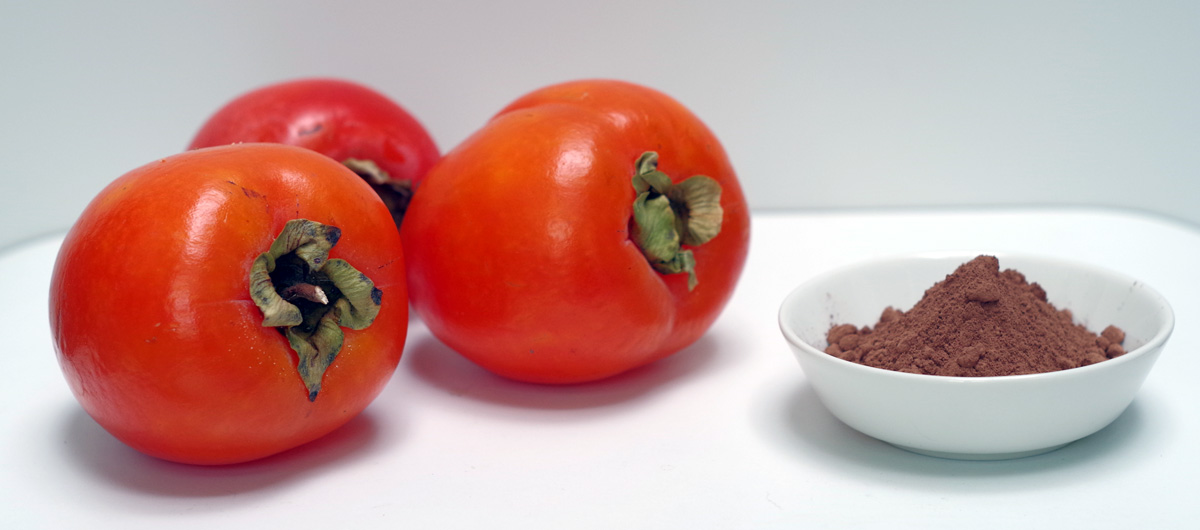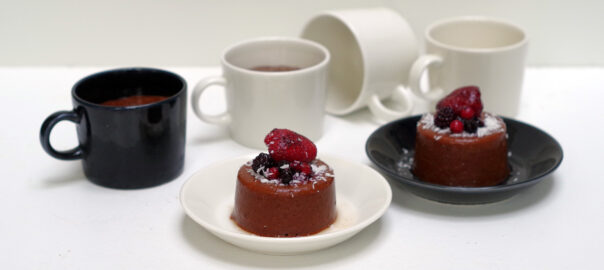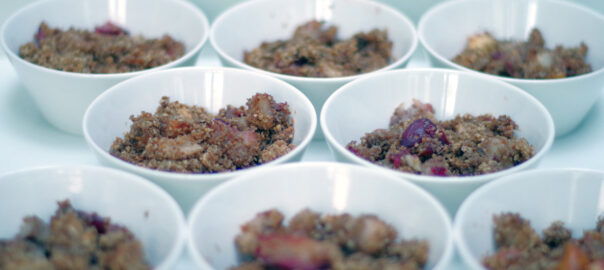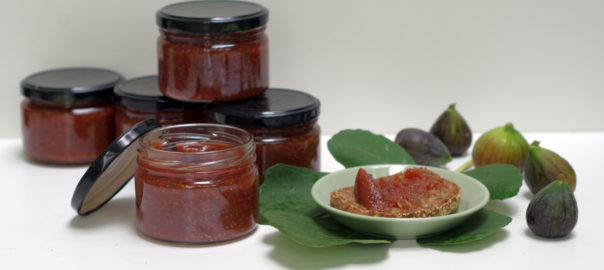Yoga Kitchen – Simple, healthy, and plant-based
One plus one equals two for once
I have yet to come across a dessert that is easier to make than this chocolate-flavoured pudding. It is 100 % plant-based, consists of just two ingredients and also fits into a completely raw diet.
Kaki fruit or persimmons appear in our shops around the end-of-year festivities. They look like large, bulbous orange tomatoes and also feel completely like tomatoes, both on the inside and outside. You can also find them in organic shops.
What ingredients do you need?
Could it be any simpler?
- 7 ripe persimmons
- 7 tablespoons of cocoa powder, unsweetened
For each kaki fruit, use one leveled tablespoon of cocoa.
I personally prefer raw cocoa powder.
Seven persimmons will yield a total volume of one litre of pudding. So depending on how much you want to prepare, you can adjust the number of kakis and spoonfuls of cocoa.

This is how to prepare them
- Peel the kaki fruits
- Cut them into chunks
- Place them in the bowl of a food processor with an S-shaped blade and grind them into a syrupy liquid
- Add the cocoa and blend some more
Then pour the mixture into the mould or moulds of your choice. Wet the mould before filling, that way you can easily release the pudding from the mould after it has set.
Let the pudding set in the fridge for 2-3 hours before serving. It’s almost unbelievable: you don’t need any binding agent to give this pudding its firmness. Magical!
All done!
You can decorate the pudding with a variety of toppings. Here are a few ideas:
- grated coconut
- almond paste or peanut butter
- fresh or thawed berries
- raw cocoa nibs
Here’s another idea for a sauce based on cashews and chopped hazelnuts.
Additional tip: You can also use this pudding as a filling for a no-bake cake base made with ground nuts and dry fruits. This way you get a very original and light chocolate cake.
The taste test and health verdict
This chocolate pudding is very much to everyone’s liking and is super easy to digest.
You have the enjoyment of chocolate flavour without the drawbacks of classic chocolate preparations that often require additional sugar or sweeteners, and you also don’t get the fats so typical of chocolate.
Tell me: is our society now collectively caught in a trip of chocolate addiction or not? I think so. Chocolate has evolved from a luxury product to something that is considered normal to be available daily. While cocoa undoubtedly contains interesting minerals, chocolate, especially black chocolate, enjoys an exaggerated status in terms of health it doesn’t really deserve at all. Best only to consume it with caution and in limited quantities.
Kaki Cocoa Pudding, per 100 g product
| Energy | Carboh. | Sugars | Fat | Sat. Fat | Protein | Fibre | Salt |
|---|---|---|---|---|---|---|---|
| 344,6 kJ/82,3 kcal | 21,7 g | 12,6 g | 0,9 g | 0,5 g | 1,6 g | 5,6 g | 0,002 g |
Participate in our cooking classes:
Read more about plant-based nutrition and health:
Read more about plant-based food
Find out about yoga and yoga classes in Schaerbeek:
Check out our yoga classes here:




